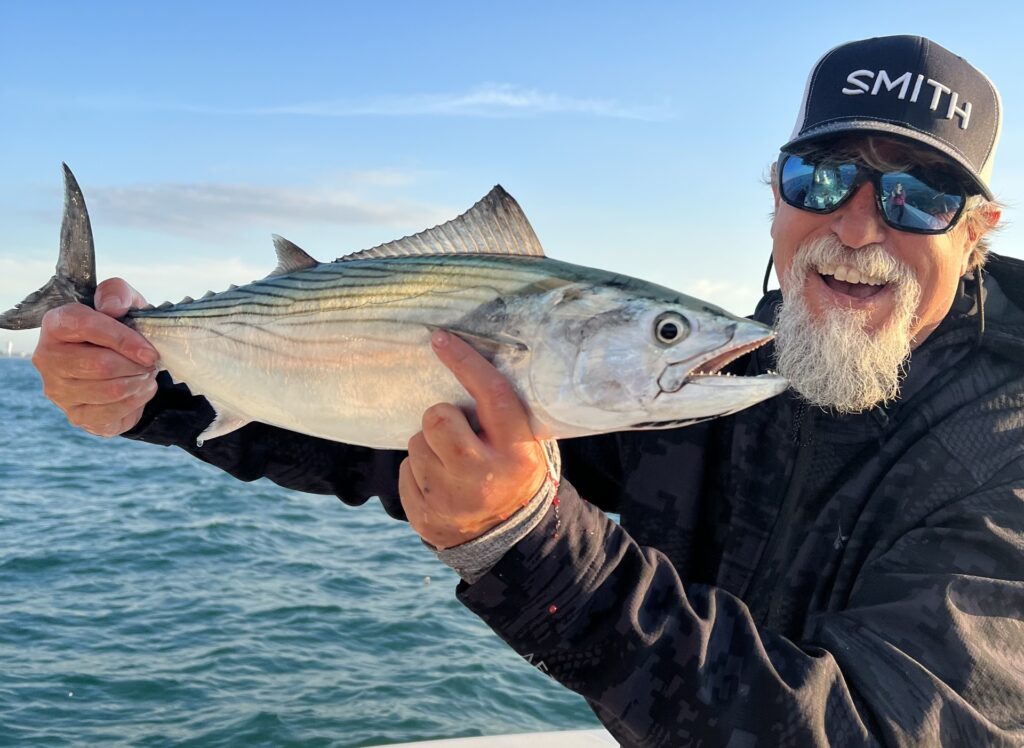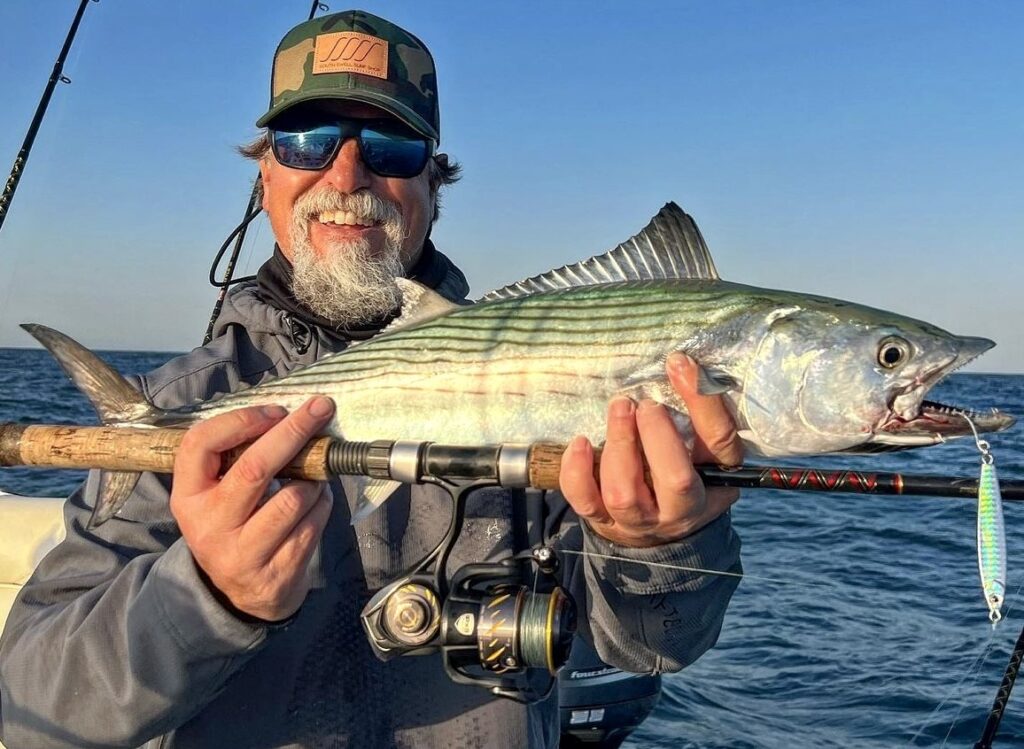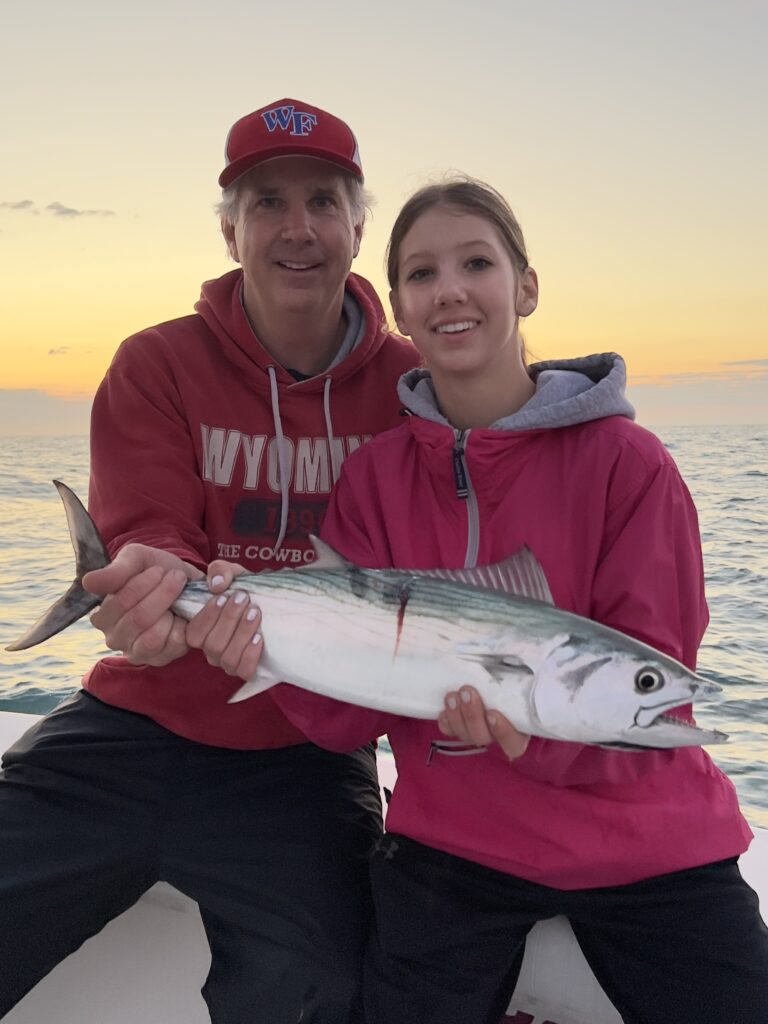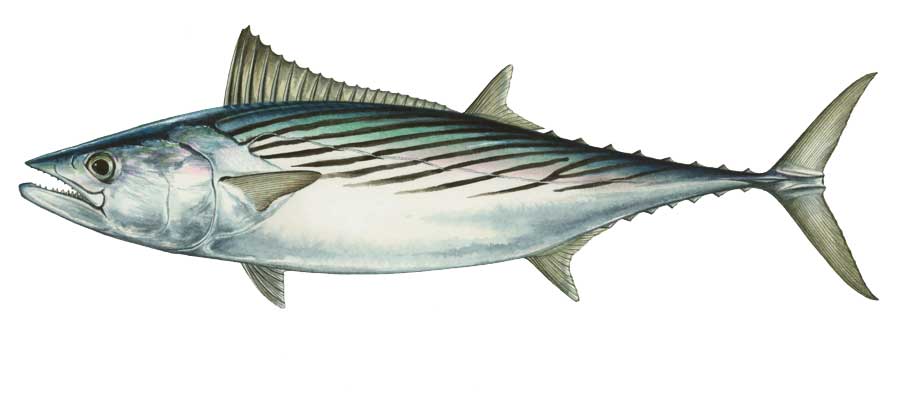
The migration of Atlantic bonito off the North Carolina coast is a welcome reminder that the spring fishing season is heating up along the mid-Atlantic seaboard. Anglers eagerly anticipate their arrival every year as the water temperatures begin to stabilize in the lower- to mid-60s. Thankfully the fish have shown up in good numbers right on time off the Crystal Coast over the past week.
Capt. Jake Geary of Reely Livin’ Charters has been taking full advantage, catching plenty of bonito fishing out of Beaufort Inlet near his home base of Atlantic Beach targeting nearshore structures like artificial reefs and natural hard bottom ledges that form off the coastline within 2-5 miles of the beach. According to Geary, they are schooling up, feeding aggressively in the early morning hours.
How to Catch North Carolina’s Atlantic Bonito

Geary is catching a lot of quality fish trolling silver and gold Clarkspoons on a mix of # 1 planers and light trolling weights. Yo-Zuri Crystal 3D Minnow diving plugs are also a great option when trolling. These diving plugs must be fished at a slower speed of 3 to 5 knots to keep them down, so Geary prefers to fish the Clarkspoons when he is actively searching for fish so he can cover more ground. Once he has identified the location, he will switch over to the Yo-Zuri plugs as their slow wobbling swimming action really seems to trigger the bite.
When he is fortunate enough to find bonito schools blitzing the surface actively feeding on small baits like silversides and bay anchovies, he has had good luck casting shiny lures like the Clarkspoon Stick Jig. It’s not a bad idea to small throw a topwater lure out in feeding frenzy as well, as they will readily eat anything that is being ripped along the surface. Always approach the feeding activity slowly and be cautious not to run over the bait or the bonito will get pushed down. Long casts and fast retrieves will put most of the fish in the boat.
Since most of the action is within earshot of the beach, many small boat anglers are getting in on the hot bite if the wind allows. When it gets crowded on the well-known wrecks like AR-315 it pays to break away from the masses and search for other locations where the fish may be feeding. A skilled captain with a side scan sonar fish finder should not have any problem finding submerged structure that holds the fish. When you identify an area that has some changes in bottom composition mark it on your unit and come back to it to see if there is any bait present. Typically, the bonito are not too far behind. It is also not uncommon to catch Spanish mackerel, false albacore and bluefish in the same areas using the same techniques.
When to Catch Atlantic Bonito

On most days the bite is best early in the morning as the sun is coming up, but some days the fish will continue to feed later in the day. Often the bonito will start to feed again as the sun begins to set in the evening, and the crowds are usually not as bad at the end of the day. When the bite dies down mid-day anglers can bottom fish in the same area for grey trout (also known as weakfish) and black sea bass that hang out on the rock piles and shipwrecks throughout the spring. Hooking an early season cobia is also a possibility.
Some years the window of opportunity is limited as they do not tend to stay in our area long, the spring run of bonito comes and go before many anglers have a chance to get in on the feeding frenzy. Hopefully with the mild spring we have been experiencing so far they will stick around for a while before the our summer pattern kicks in. Now is the time to get out there and try your luck before they push north and leave our area.
Bonito for Dinner
Atlantic bonito attracts a lot of anglers’ attention for good reason, as they make excellent table fare. Many anglers choosing to enjoy them as sashimi fresh right on the boat with a bottle of soy sauce. They also are great to eat in a poke bowl or prepared on the grill like you would yellowfin tuna.
Though a lot of anglers confuse them with false albacore, there is a huge difference in taste between the two. When prepared properly it is hard to beat the taste of a fresh-caught Atlantic bonito. The same can’t be said for the false albacore, which is often used as bait.
What are Atlantic Bonito?

A lot of new anglers confuse Atlantic bonito with false albacore. Many people refer to false albacore as bonita, so the common names fishermen use in different regions can be misleading. Their behavior is also very similar so they often get caught on the same lures utilizing the same fishing techniques.
Both species also run in the same nearshore areas during the spring migration. However, a discerning eye can easily recognize the differences. Bonito have straight horizontal lines above their lateral line on both sides with a solid silver belly. False albacore have irregular markings along their back and small spots underneath their pectoral fins. When in doubt, the easiest thing to remember is bonito have a row of very sharp teeth while false albacore do not have teeth at all.









